No one wants to be a referee — well, no one in their right mind anyway. Players and coaches scream at them, fans berate them, and broadcasters point out their mistakes in real time. No wonder there are so many technical fouls, red cards, and ejections. Just think about when you’re refereeing your kids. Oh, what we would give to be able to T them up and send them to the showers. Well, keep dreaming because it’s no different for retailers.
The digital shelf is not a level playing field. Retailers do not want to play referee either. They leave every brand to fend for themselves for data collection. As a result, the brands with the best tools and digital shelf data get the best insights and a serious competitive advantage. That’s why powerhouse ecommerce brands are investing in digital shelf analytics.
Retailers won’t tell you the secrets of their search algorithm or even share what kind of impressions and traffic your product pages get. But with the right tools, you can analyze your digital shelf performance, see how your pages stack up with the competition, and act on opportunities to improve your position.
If you’re trying to choose a digital shelf analytics solution, it helps to know what insights you can glean from these tools.
Here are 10 of the most valuable insights you can learn with digital shelf analytics.
1. Your competitors have found new search terms to pursue
Consumers use multiple terms for the same product categories, but retailers don’t tell you which ones they use the most. Every brand in your space is competing to optimize their pages for the same handful of terms, relying on their internal data to predict which are the most popular on each retailer search engine.
Scroll through the results of your top product category. You’ll see numerous titles, descriptions, and pages that look and feel very similar. Everyone is trying to do the same thing, and it yields similar results.
Every once in a while, someone discovers a new opportunity. Through surveys, customer service calls, reviews, and other interactions with your target market, a competitor might find new terms consumers use to find and describe your product category.
How can you tell? Ads.
With Brand Monitor, PriceSpider’s digital shelf software, you see which keywords your competitors have placed ads on. These terms may not currently be optimized, but it’s where they see potential opportunity. Or perhaps they plan to pursue these terms more aggressively, using paid search results to earn organic rankings.
Either way, you’ll want to keep an eye on these terms — or apply some of your own ad budget toward them.
2. Your product pages are no longer optimized for search
It would be silly to check your position in search results for every product and every relevant keyword in every retailer’s search engine. But if you could, over time this would build up a valuable database. You could see how your rankings have changed over time for your target terms.
While the top brands in your category may seem relatively stable, as brands in your space innovate and optimize, stable product pages that remain stagnant may slip in ranking behind those that continually improve. You don’t want to be constantly swapping out your product page assets, but over time, they should evolve as you learn new information about what shoppers are searching for and how a search engine determines the best result.
Brand Monitor’s Share of Search tool lets you track your position over time for all your relevant search terms for all your SKUs on all your retailers’ websites. Now every month or every quarter, you can review your rankings and see where you’ve gained or lost ground.
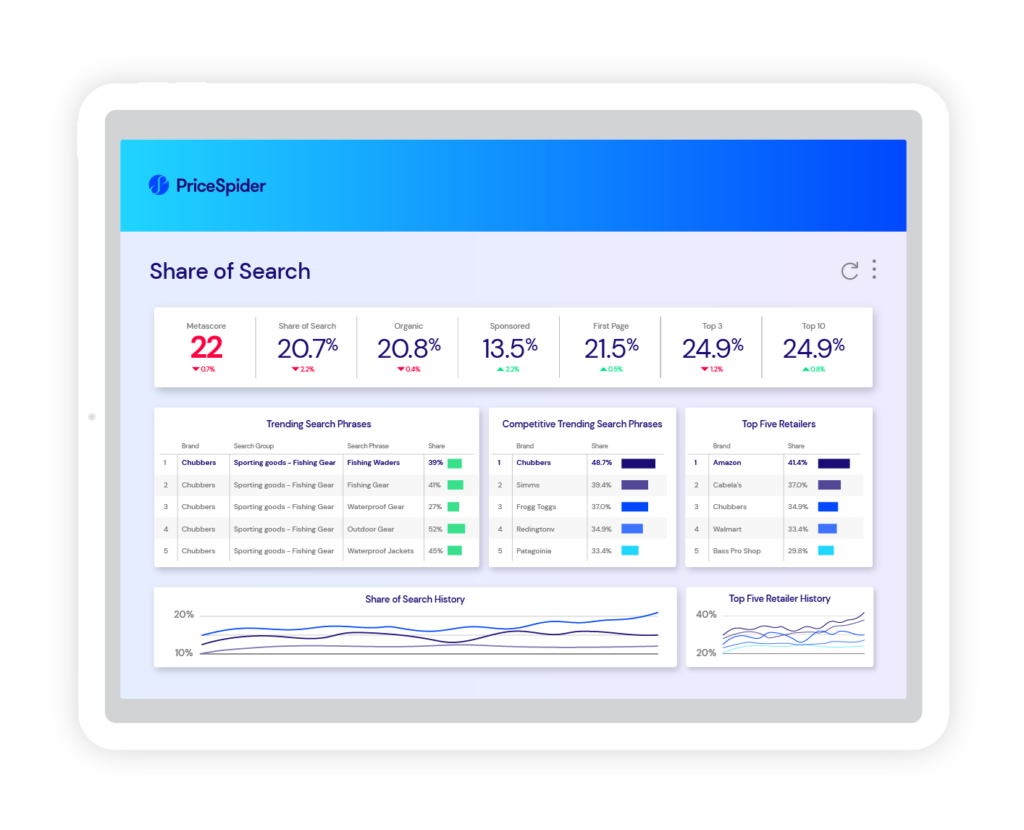
If your position falls for crucial keywords, you can see exactly when that began and who took your position. You might be able to connect your drop in rankings to a specific update or the emergence of a new competitor.
While your pages may have been optimized for your target terms once upon a time, now may be the time to reevaluate the competitive landscape and see what everyone else is doing that you’re not. Of course, if you’ve gained a stronger position for other terms, you’ll have to weigh the potential cost of trying to re-optimize for a term you used to rank for.
3. Your retail partner’s search engine is broken
Sometimes a drop in rankings has nothing to do with you. Retailers are always trying to improve their search engines, and search engines often use machine learning to predict what customers are actually looking for. Sometimes they make mistakes, especially in product categories where the algorithm doesn’t have much data. Updates to the algorithm can also cause problems.
So how do you know if a retailer’s search engine is broken? By looking at other search engines. In Brand Monitor’s Share of Search dashboard, it’s easy to filter results by retailer, so you can quickly see when one doesn’t look like the others. If you’re ranking for a category on several retailer websites, but another retailer appears to interpret the keyword as a request for a totally different product category, it’s worth sharing that information with your retail partner. They want to serve the best results, and if they’re giving their customers the completely wrong category, they’ll be glad you told them.
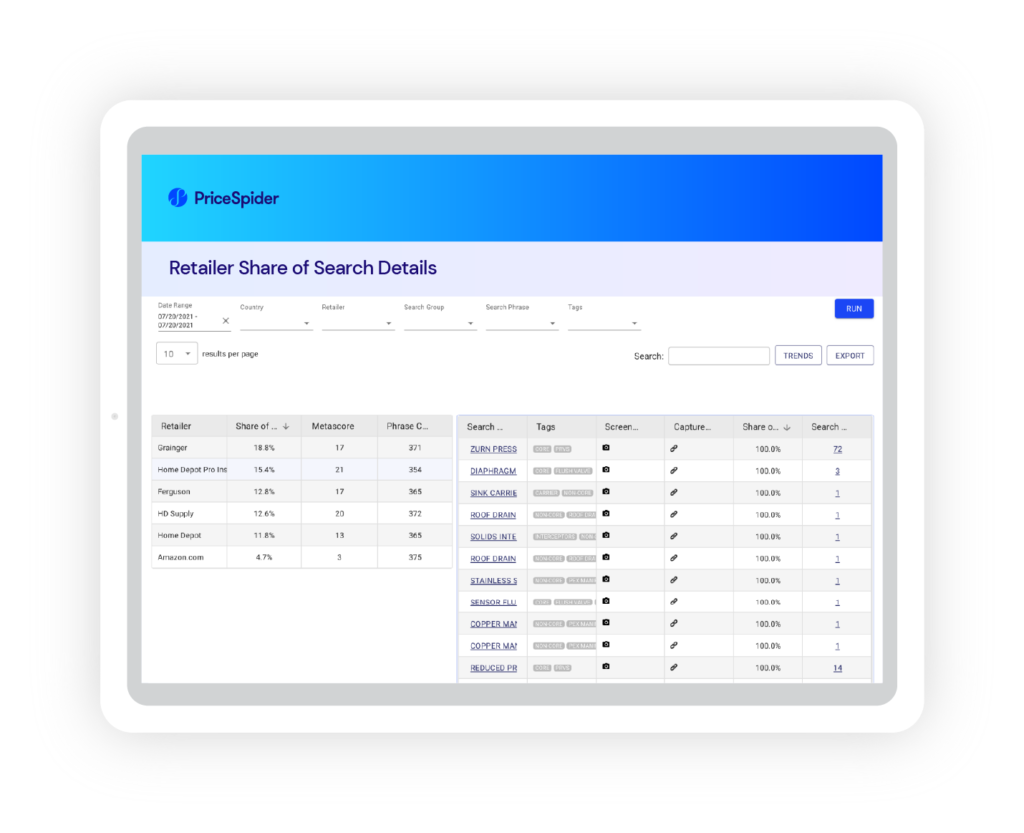
4. Your brand is wasting ad spend on out-of-stock products
If you’re like most brands, you have limited ad budget. You may also waste some of that budget every month attempting to drive customers to pages where your products are out-of-stock. Some retailers flag out-of-stock product pages when they appear in the results, so people won’t even click through to see your copy and other assets. Those who do click through can’t buy. So why pay to send them there?
This usually happens because brands don’t have good visibility into their product stock status. Items could be out-of-stock for a couple days or just a few hours, so you have limited time to turn off those ads. If you do, you also have to remember to turn them back on when your product is back in stock.
With Brand Monitor, you can easily monitor the stock status of all your SKUs everywhere they appear. Get alerts when a product’s stock status changes, making it easy to turn ad campaigns on or off as needed. Depending on the size of your ad campaigns and the stability of your supply chains, this could save you thousands of dollars a month. That’s budget you could redirect toward the products people can actually buy.
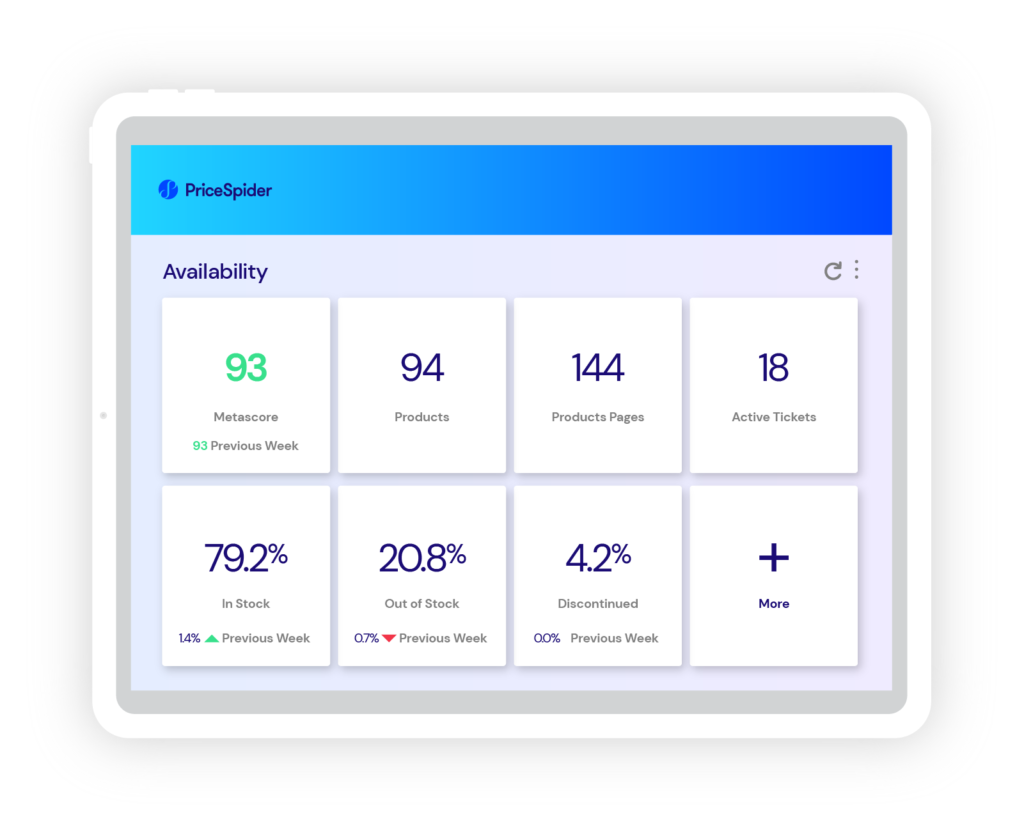
5. You can win sales from your competitors’ branded search
On the flip side, it’s good to remember: when your competitors are out-of-stock, their customers can’t buy, either. Every time their stock hits zero, you gain a unique opportunity to ramp up ads on their branded search terms.
Normally, this isn’t the most valuable way to spend your budget — if a shopper is searching for your competitor by name, that’s the product they want to buy. But if that product isn’t available? They’re stuck looking somewhere else or buying something else. Put your product in your competitor’s branded search results, and suddenly you’re the next best thing. You’re the first alternative they’ll see at a time when they’re just realizing they have to buy something else or leave the website.
Brand Monitor finds these opportunities for you automatically, tracking your competitors’ stock status just like your own.
6. There’s a problem unrelated to your product
Don’t you hate it when your product pages get bad reviews for things that have nothing to do with your products. It’s frustrating, but it happens all the time. Customers associate every aspect of their transaction experience with your product. Checkout. Shipping. Customer service. To the customer, it all comes back to your brand.
Unfortunately, the only way to know if a seller is using cheap packaging or a carrier is being careless with your packages is if your customers say so. When you’re trying to monitor thousands of SKUs on hundreds of retail websites, it’s easy for these problems to persist for weeks or even months due to poor visibility.
Brand Monitor’s Ratings & Reviews feature shows you aggregate ratings and review sentiments, allowing you to zoom in on specific sellers and date ranges. This helps you see if, say, in the last seven days, a significant percentage of reviews have included phrases like “arrived broken” or “no customer support.”
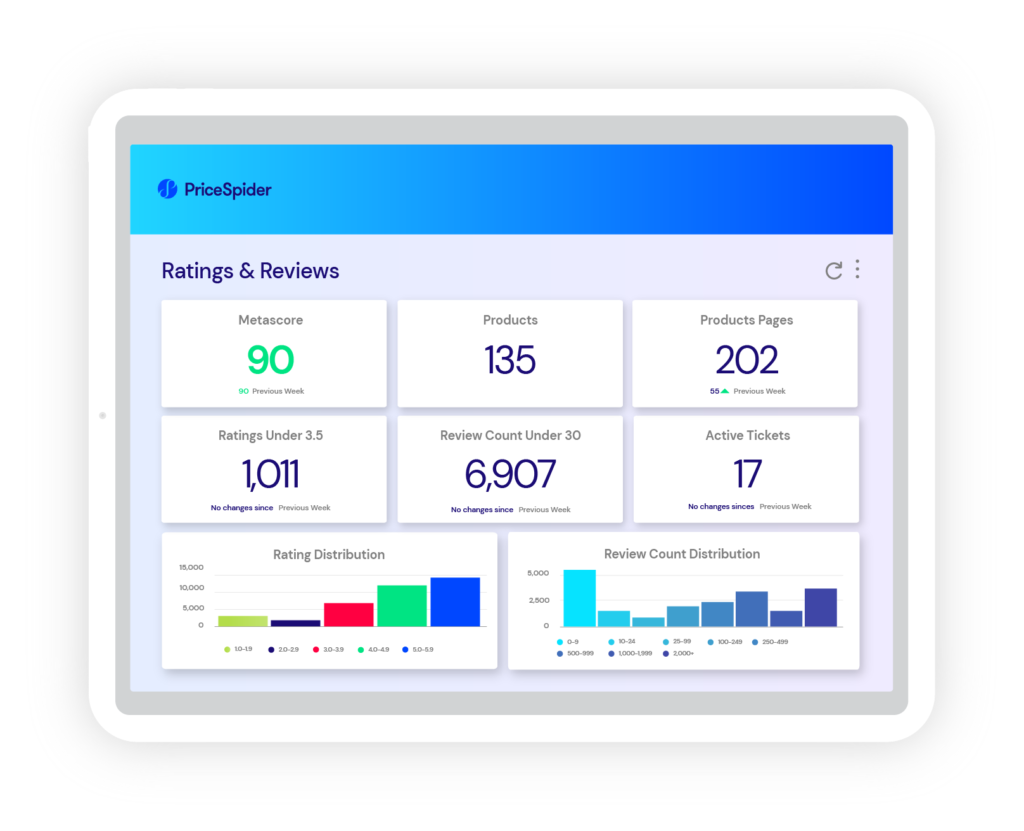
7. One seller keeps starting price wars
Every seller wants to have the best prices. That’s why you can’t trust everyone to simply follow your pricing policy. Your best retail partners do their best to respect it, but others couldn’t care less about your brand or their relationship with you. They don’t hesitate to violate your policy and put everyone else in an awkward spot: do they bleed sales because this seller has better prices, or do they violate your price, too, to compete?
Most will drop their prices to compete. Often automatically. Thanks to repricing software, sellers don’t even need to see that someone else lowered their price. The software automatically adjusts their price. When everyone is using repricing software, one violation snowballs into many, driving your prices (and your margins) to the ground.
If you take pricing policy violations seriously, you need to see who moved first. A violation is a violation, but the first one is the most damaging. If you can shut down the sellers who don’t care about your pricing policy, you’ll have far fewer violations moving forward.
Brand Monitor’s price monitoring capabilities track prices for every SKU in your catalog on every website you sell through. If a seller violates your MAP policy, you’ll know — and you always see who violated it first.
8. Some of your product page assets are still outdated
Every time you update your product page titles, descriptions, supporting copy, images, and videos, it needs to be rolled out across hundreds of websites, each with their own update process. Some use a product information management (PIM) system so you can update assets internally. Others require you to work with a rep, pinging them until they apply the new assets.
It’s an error-prone process, which makes it no surprise that brands often have outdated copy and images on product pages. This creates multiple “versions” of your pages, leading to customers having a different experience with and perception of your brand depending on where they find it — particularly if they encounter outdated assets. If your product itself has changed, these updates are critical. Outdated assets could seriously mislead a shopper about what your product looks like or what it’s capable of. It’s essential that your product is represented consistently on the digital shelf.
Brand Monitor’s content compliance tools ensure that you always see when seller pages aren’t in compliance with your latest brand guidelines. Using a master copy of your product pages and image recognition, Brand Monitor evaluates each page and gives it a compliance score based on how well it follows your guidelines. It even detects if your images are correct but in the wrong order.
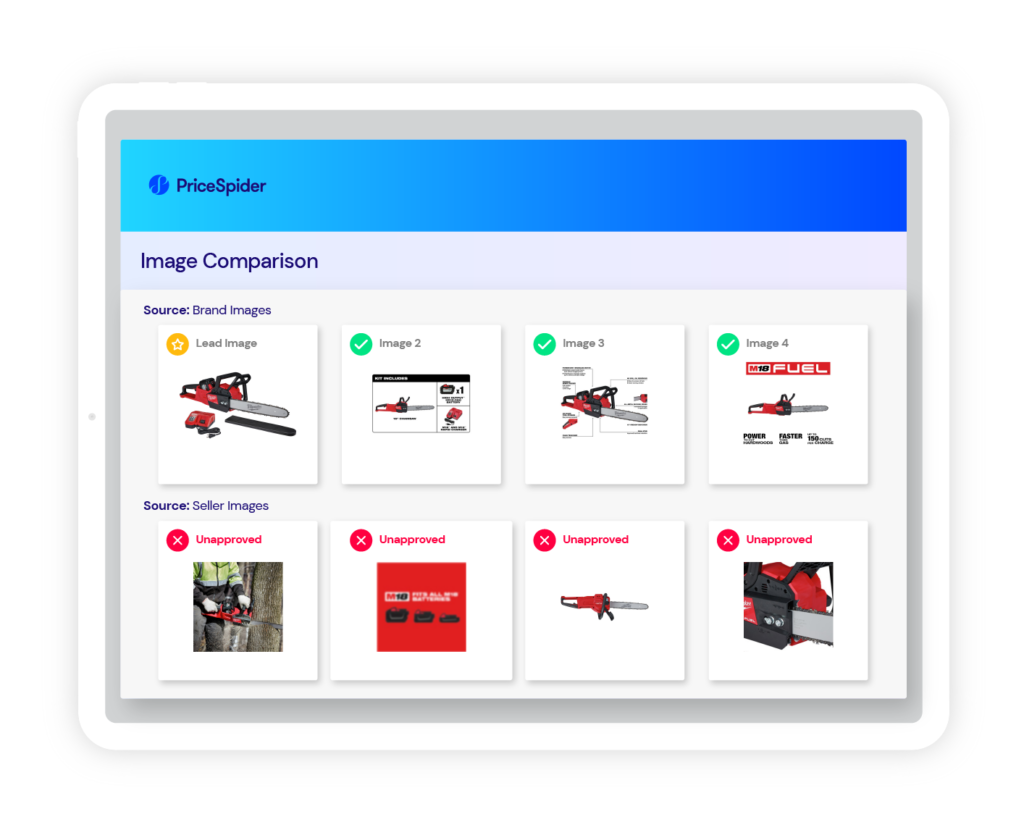
9. You had a spike in one-star ratings last quarter
When your product pages have been live for years and accumulated hundreds or thousands of ratings and reviews, you might not notice if 60 percent of last quarter’s ratings were one star. It might barely put a dent in your average ratings. But you’d want to know, right? A sudden dip in ratings could represent a major problem you need to address, and the longer you let it go on, the greater the chance that it could cause long-term damage to your brand’s reputation.
Brand Monitor lets you examine ratings and reviews by date range, so you can periodically analyze your ratings from every retail website or hone in on a specific one. This digital shelf insight makes it easier to draw connections between a drop in ratings and particular changes. It could be that a recent promotion created unrealistic expectations, or there’s a defect you need to correct. Whatever the case, you can only diagnose the problem when you can see the symptoms.
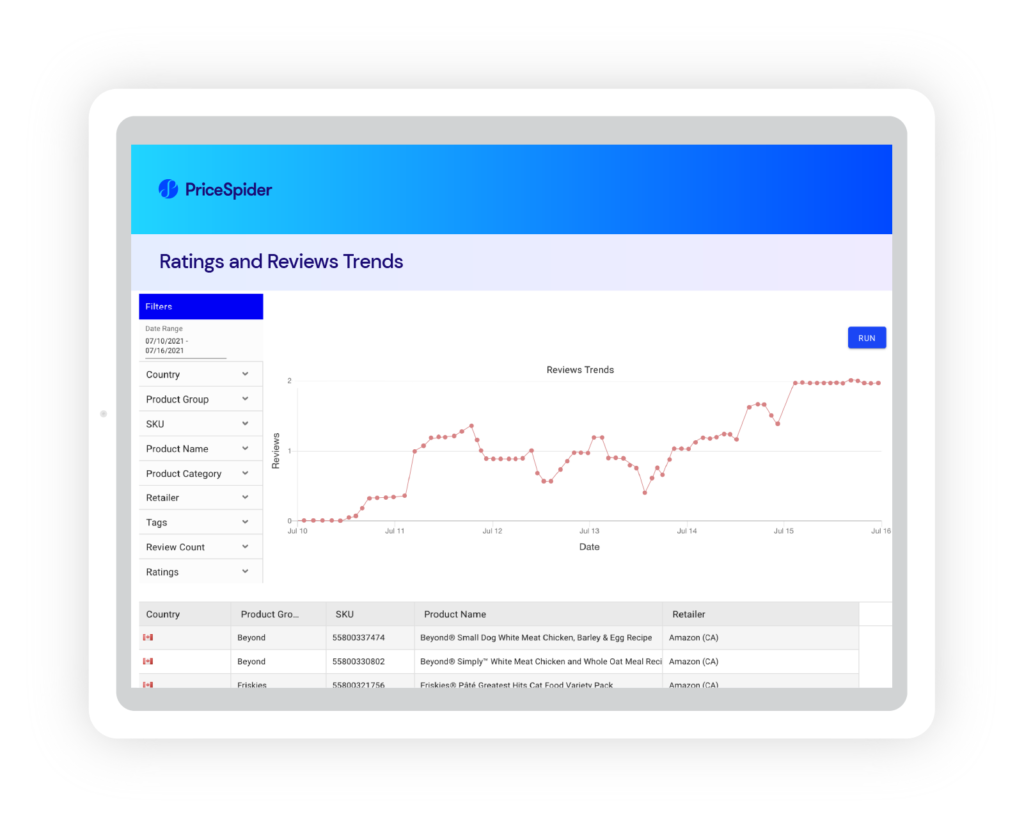
10. Customers frequently use your products in unexpected ways
Analyzing reviews can reveal good things, too. In positive reviews, satisfied customers frequently share what the product enabled them to accomplish. You may find that they’re accomplishing things you never imagined. By paying attention to customer reviews, you can discover new use cases, benefits, and product positioning that will make your product more appealing to personas you didn’t even know you were attracting.
This is another instance where Brand Monitor’s Ratings and Reviews tool comes in handy. If your customers frequently mention that they’re using your product in a way that never occurred to you, you’ll see it when you analyze review sentiments. This insight may lead you to incorporate new language into your product pages or even to build a promotion around the newly discovered use case.
Discover digital shelf insights for yourself
It’s incredibly difficult to manually collect and analyze digital shelf data, and even more difficult to turn them into insights. Depending on the size of your catalog, you may be attempting to monitor multiple metrics for thousands of SKUs on hundreds of websites — and some need to be tracked in real time to be of any value. But with a digital shelf analytics solution such as Brand Monitor, it’s effortless. You get all the information you need in convenient dashboards that inspire actionable insights.
Want to see what Brand Monitor could do for your brand?
Schedule a demo of Brand Monitor today.

